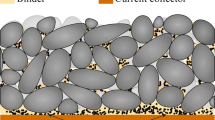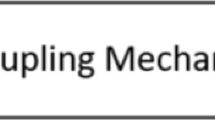Abstract
This article introduces a newly developed design method that may be utilized in modern high-voltage vacuum interrupter (VI) design. At first, a typical 24 kV vacuum chamber is modeled using finite-element method. Potential and electric field profiles are derived and analyzed in detail. To continue, the proposed approach which consists of twin metallic rings placed in the porcelain tubular insulator is added to the previous model and the new model is analyzed in three steps: short-, medium- and long-course scenarios. The achieved patterns illustrate the severe reduction in electric field value of the contacts' surface especially for long-course prototype (up to 74.2%). This phenomenon is discussed in detail. Considering the Fowler–Nordheim quantum tunneling equation; a reduction in electric field intensity brings to lower field emission current value which is the most important factor of breakdown during BIL tests. It is important to note that any reduction in electric field value results in decrease in micro-discharge value and microparticle movement, which are the additional reasons for vacuum insulator failure during high-voltage pulse insertion. This means that the inception voltage of the proposed VI can be increased so that higher BILs like 63 kV insulation high voltage requirements are achieved. The reduction rate of field emission current density is reduced to 4.9% of its initial value for or 120-mm course which expresses the effectiveness of this new approach.






Similar content being viewed by others
References
Shemshadi A et al (2013) A novel approach for reduction of electric field stress in vacuum interrupter chamber using advanced soft computing algorithms. IEEE Trans Dielectr Electr Insul 20(5):1951–1958
Shemshadi A et al (2015) Dielectric recovery process in vacuum interrupters regarding to contact materials during post arc interval. IEEE Trans Dielectr Electr Insul 22(5):3059–3064
Falkingham LT (2002) Fifty years of vacuum interrupter development in the UK. In: 20th International symposium discharges and electrical insulation in vacuum. pp 1–8
van Lanen EPA, Popov M (2005) Vacuum circuit breaker current-zero phenomena. IEEE Trans Plasma Sci 33:1589–1593
Matsuo T, Fujimori H, Yanabu S (2006) Insulation recovery characteristics after current interruption by various vacuum interrupter electrodes. IEEE Trans Dielectr Electr Insul 13:10–17
Boxman RL, Sanders DM, Martin PJ (1995) Handbook of vacuum science and technology. Noyes, Park Ridge
Slade PG (2008) The vacuum interrupter, theory, design, and application. CRC Press, Boca Raton
Orama LR (2005) Numerical modeling of vacuum arc dynamics at current zero using ATP. In: International conference on power system transients. pp 155–160
Lieberman MA (2005) Principles of plasma discharges and materials processing, 2nd edn. Wily, Hoboken
Inan U (2011) Principles of plasma physics for engineers and scientists. Cambridge University Press, Cambridge
Wadhwa CL (2007) High voltage engineering, 2nd edn. New Age International, New Delhi, pp 10–12
Lide DR (2008) Handbook of chemistry and physics. CRC Press, Boca Raton
Schumann U, Giere S, Kurrat M (2003) Breakdown voltage of electrode arrangements in vacuum circuit breakers. IEEE Trans Dielectr Electr Insul 10(4):557–562
Paschen F (1889) Ueber die zum Funkenübergang in Luft, Wasserstoff und Kohlensäure bei verschiedenen Drucken erforderliche Potentialdifferenz (On the potential difference required for spark initiation in air, hydrogen, and carbon dioxide at different pressures. Ann Phys 5:69–75
Shemshadi A et al (2018) The requisition of auto synchronism for vacuum interrupters during quenching arc interval. Latin Am Appl Res 48(1):1–5
Kim B, Lee D, Parka K, Choi SR (2004) Prediction of plasma etching using a randomized generalized regression neural network. Vac J 76(1):37–43
Schwed JW et al (2010) Photon-enhanced thermionic emission for solar concentrator systems. Nat Mater 9:762
Matsui Y, Nagatake K, Takeshita M, Katsumata K, Sano A (2006) Development and technology of high voltage VCBs; brief history and state of art. In: International symposium on discharges and electrical insulation in vacuum (ISDEIV). vol 1, pp 253–256
Hartmann W, Hauser A, Lawa A, Renz R, Wenzel N (2010) The 3D numerical simulation of a transient vacuum arc under realistic spatial AMF profiles. In: 24th International symposium on discharges electrical insulation in vacuum. pp 285–288
Author information
Authors and Affiliations
Corresponding author
Additional information
Publisher's Note
Springer Nature remains neutral with regard to jurisdictional claims in published maps and institutional affiliations.
Rights and permissions
About this article
Cite this article
Shemshadi, A. A novel approach for basic insulation-level (BIL) enhancement of vacuum interrupters. Electr Eng 102, 2075–2081 (2020). https://doi.org/10.1007/s00202-020-01020-8
Received:
Accepted:
Published:
Issue Date:
DOI: https://doi.org/10.1007/s00202-020-01020-8




